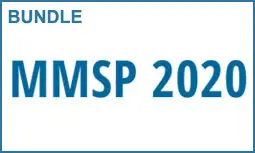Evaluating the Performance of Apple''s Low-Latency HLS
Kerem Durak, Mehmet N. Akcay, Yigit K. Erinc, Boran Pekel
-
Members: FreeSPS
IEEE Members: $11.00
Non-members: $15.00Length: 04:40
24 Sep 2020
Last year in its developers conference, Apple has announced an extension to its popular HTTP Live Streaming (HLS) protocol to enable low-latency live streaming while maintaining backwards compatibility with the existing HLS clients. This extension offers new features such as the abilities to generate partial segments, use playlist delta updates, block playlist reload and provide rendition reports. Compared to the traditional HLS, these features require new capabilities on the origin servers and the caches inside a content delivery network. While HLS has been known to perform great at scale, its low-latency extension is likely to consume considerable server and network resources, and this may raise concerns about its scalability. In this paper, we make the first attempt to understand how this new extension works and performs. We also provide a 1:1 comparison against the low-latency DASH approach, which is the competing low-latency solution built on an open standard.



